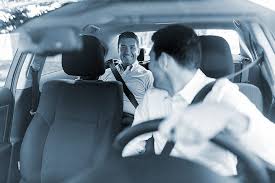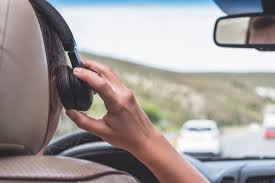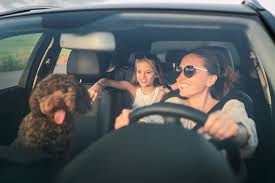DISTRACTED DRIVING
Passenger Distractions

1. What Is Passenger Distraction?
Passenger distraction occurs when someone inside the vehicle diverts the driver’s attention from the road.
This can include:
- Talking loudly or nonstop
- Arguing or emotional conversations
- Playing loud music
- Moving around, grabbing things, or blocking the driver
- Children fighting, crying, or needing attention
- Friends joking, shouting, or encouraging risky behavior
Why this is dangerous: Passenger behavior interferes with the driver’s focus, reaction time, judgment, and ability to operate safely.
2. How Passengers Distract Drivers
1. Visual Distraction
- Turning to look at a passenger
- Watching what they are doing
- Checking on children in the back seat
2. Manual Distraction
- Reaching back to help a child
- Trying to take objects from a passenger
- Adjusting items passengers are using
3. Cognitive Distraction
- Engaging in deep conversations
- Emotional stress from arguments
- Being pressured or influenced by friends
Even a calm conversation can reduce driver concentration by up to 40%.
3. High-Risk Passenger Situations
Certain passengers create more distraction risks:
1. Children
- Crying, fighting, demanding attention
- Dropping items and asking the driver to help
2. Teen Friends / Peer Groups
- Encouraging speeding or risky maneuvers
- Loud or playful behavior
- Taking photos, joking, or distracting the driver
3. Emotional Passengers
- Arguing
- Sharing stressful news
- Crying or panicking
4. Pets
- Moving around the car
- Jumping on the driver
- Blocking mirrors or controls
4. Risks and Consequences
Passenger distraction can cause:
- Missed road signs
- Lane drifting
- Delayed braking
- Collisions at junctions
- Loss of vehicle control
- Pedestrian or cyclist accidents
Consequences may include:
- Injury or death
- Legal penalties
- Higher insurance costs
- Emotional trauma
- Damage to vehicle and property
5. Safe Driving Practices
1. Set Rules Before Driving
- Ask passengers to remain calm and avoid distracting behavior.
- For children, ensure they are properly buckled into child seats.
2. Minimize Conversations
- Keep chats light and short.
- Avoid deep or emotional discussions while driving.
3. Use Child Safety Strategies
- Give children snacks, toys, or activities before driving.
- Pull over safely if a child needs attention.
4. Control the Environment
- Maintain safe noise levels in the car.
- Ensure pets are secured with harnesses or carriers.
5. Practice Assertiveness
If a passenger distracts you:
- Politely ask them to stop.
- Pull over if necessary.
- Explain that safety comes first.
6. Self-Reflection Questions
- Have you ever been distracted by a passenger?
- How did it affect your ability to drive?
- What rules could you set to prevent such distractions?
- How do you handle emotional or noisy passengers?
7. Quick Self-Check Quiz
- List two types of passenger distractions.
- True or False: It is safe to discipline a child while driving.
- What is the best action to take during a heated argument in the car?
- Why are teen passengers high-risk?
Answers:
- Visual distraction, manual distraction, cognitive distraction.
- False — it is extremely unsafe.
- Pull over safely first.
- They can influence risky behavior and cause loud or playful distractions.
8. Key Takeaways
- Passengers can be a major source of distraction.
- Drivers must set boundaries and prioritize safety.
- Emotional and noisy situations require calm, controlled responses.
- Pull over whenever passenger behavior affects focus.
Remember: Your first responsibility is safe driving — everything else can wait.
Related Tutorials

DISTRACTED DRIVING
Emotional Distraction
1. What It IsEmotional distraction occurs when strong feelings—anger, sadness, stress, e...
Read More
DISTRACTED DRIVING
Wearing or Adjusting Headphones/Earbuds
1. What It IsAdjusting headphones or earbuds while driving is a form of manual and visual ...
Read More
DISTRACTED DRIVING
Dealing With Children or Pets
1. IntroductionChildren and pets can create sudden, unpredictable distractions inside a ve...
Read More